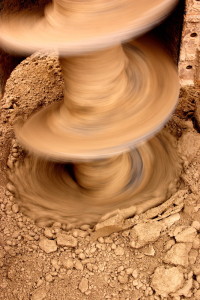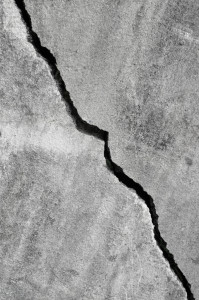Retaining Wall Material Guide


Retaining walls offer a mix of form and function. A retaining wall can hold back the soil behind it, playing an important role in preventing erosion, particularly on hills or in areas where plants can’t grow. Retaining walls are also used to create flat, usable ground on hilly terrain for things such as parking lots and sports fields. A retaining wall can also enhance landscape designs. For example, a landscape architect or designer might build retaining walls to create different levels of terrain or different elevations in a garden.
Retaining walls differ from the walls that hold up a building or another structure. While the walls of a home or apartment building are designed to support vertical loads such as ceilings and roofs, retaining walls are meant to support horizontal loads. For that reason, the design and engineering of a retaining wall differ from the design and engineering of the wall of a building.
While there are similarities in the types of materials used for building retaining walls and other types of walls, some materials are better suited for use with retaining walls. In this guide, we’ll take a look at some of the most commonly used materials for retaining walls.


 When the summer heats up, we often begin looking for methods of keeping things cool while outdoors. Whether we are trying to cool our gardens, our structures, or ourselves, water is considered one of the most effective tools in this regard. But not all things will benefit from added water, even on a hot summer day.
When the summer heats up, we often begin looking for methods of keeping things cool while outdoors. Whether we are trying to cool our gardens, our structures, or ourselves, water is considered one of the most effective tools in this regard. But not all things will benefit from added water, even on a hot summer day.
 Wood construction is no longer constrained to low rise buildings and single-family homes. New uses are emerging resulting from an expanded interest in wood with new trends impacting construction. Tall wood construction has resulted in multiple high-rise wood buildings around the world from the
Wood construction is no longer constrained to low rise buildings and single-family homes. New uses are emerging resulting from an expanded interest in wood with new trends impacting construction. Tall wood construction has resulted in multiple high-rise wood buildings around the world from the 


 With Summer just around the corner, you may want to consider converting that unused roof area into a gathering spot with a beautiful view.
With Summer just around the corner, you may want to consider converting that unused roof area into a gathering spot with a beautiful view. 



 With Summer just around the corner, you may want to consider converting that unused roof area into a gathering spot with a beautiful view.
With Summer just around the corner, you may want to consider converting that unused roof area into a gathering spot with a beautiful view. 


 Occasionally we run into a building owner that regards soil sampling and testing as an unneeded extra expense and asks if we can forgo this effort. Generally, soil is sampled by using a drill rig that bores into the ground up to 40-feet, or more deep. Small samples of the various soils that are found at different levels or strata are taken to a laboratory for testing to determine the composition of the soil, moisture content, and other properties.
Occasionally we run into a building owner that regards soil sampling and testing as an unneeded extra expense and asks if we can forgo this effort. Generally, soil is sampled by using a drill rig that bores into the ground up to 40-feet, or more deep. Small samples of the various soils that are found at different levels or strata are taken to a laboratory for testing to determine the composition of the soil, moisture content, and other properties.
